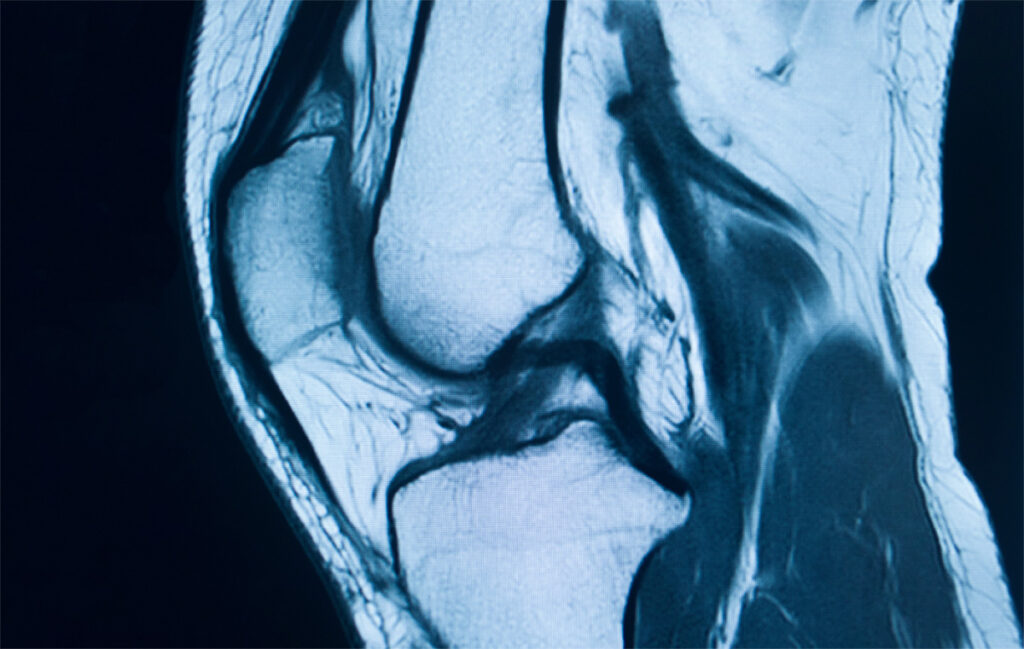
The Difference Between MCL and ACL Tears
- Posted on:
- Posted in: Health
The knee is a complex part of the body that is made up of bones, tendons, cartilage, and ligaments. The knee joint is susceptible to a wide range of injuries. In this article, we will focus on two common types of ligament tears that will result in knee pain: MCL and ACL tears. Tears in the MCL or ACL can cause ongoing or chronic pain in the knee. If you think you might have an MCL or ACL tear, we recommend consulting with a physician to receive a proper diagnosis and treatment plan.
There are four major ligaments that help to stabilize the knee:
- The MCL or Medial Collateral Ligament, attaches the thigh bone to the shin bone and is located on the inner side of the knee joint.
- The ACL, or Anterior Cruciate Ligament, connects the upper leg bone with the lower leg bone and is located in the middle of the knee.
- The LCL, or Lateral Collateral Ligament, connects the femur to the calf bone.
- The PCL, or Posterior Cruciate Ligament, connects the femur to the tibia.
Below, we will discuss the difference between MCL tears and ACL tears, as well as the treatment options available for both injuries.
ACL Tear Symptoms
There are several common symptoms and signs of an ACL tear, including:
- An audible pop
- Numbness down the leg, usually a symptom of a serious tear
- Knee instability
- Difficulty with walking and/or standing
- Pain that ranges from mild to intense within the knee
- Swelling minutes after the injury
An ACL injury is categorized into three degrees that rank the damage, the lowest being a sprain. There are several common causes of an ACL injury or tear, including:
- A sudden turn or cut made with the knee
- A jump landing where the leg suddenly gives way
- A sudden stop
- Hit on the side of the knee while the foot is planted on the ground
- Hyper-extension
If any of these incidents occur and are followed by the symptoms listed earlier, it’s important to see a medical professional quickly to receive proper treatment.
MCL Tear Symptoms
Like the ACL, MCL injuries and tears have three degrees of damage that begin with a sprain. Depending on the degree of the injury, the symptoms include:
- Minimal swelling and mild tenderness, indicative of the first degree
- More intense pain and swelling on the inside of the knee, instability is more likely. Indicative of a second-grade injury.
- MCL ligament rupture and a complete tear, significant swelling, instability/knee giving out, and difficulty bending the knees are indicative of a third-degree MCL injury.
An MCL tear is typically caused in two ways:
- The knee experiences a twisting motion
- A hit to the outside of the joint that pushes the knee inward during a direct contact sport
If either of these incidents occur and is followed by the symptoms listed, it’s important to see a medical professional quickly in order to know the extent of the injury and receive proper treatment for the MCL.
Difference Between ACL Tears and MCL Tears
Due to the knee having several different parts and different types of injury all causing pain, it’s easy for a person to be unsure of what is torn or injured. One key difference between a torn ACL and an MCL tear is the location. The ACL is located inside of the knee joint, connecting the shinbone to the femur or thigh bone and creating an X on the inside of the knee along with the PCL. The MCL, on the other hand, is on the inner side of the knee and connects the thigh bone to the shinbone, helping to give sideways motion to the knee.
Another difference is in the symptoms expressed in a torn knee ligament. MCL tears, for example, don’t give a popping sound when it occurs while an ACL injury will. A final difference between ACL and MCL injuries is that the latter is typically easier to recover from, which is covered in the next section.
Treatment and Surgery
For both ACL and MCL injuries, an orthopaedic must be seen so a proper evaluation can be done. While both injuries are initially treated the same with ice, crutches, and immobilization, an ACL often requires surgery if the injury is severe enough. An MCL injury typically doesn’t require surgery unless other ligaments are torn or there is a complete rupture.
The MCL is able to heal on its own with proper care via icing, bracing, and physical therapy. It’s important to keep the knee from performing any sideways motion while it heals from an MCL tear. The surgical treatment of an ACL tear requires arthroscopy, where a small camera is inserted into the knee so that the surgeon can see where the damage is and repair it with either tissue from your own body or a cadaver. This is a discussion to have with your doctor as there are pros and cons to each choice.
At Proliance Puget Sound Orthopaedics, we provide best-in-class orthopedic care to our community with compassion, caring, and dedicated expertise for knee injuries and tears. If you’re suffering from any of the symptoms listed previously or require treatment for either an ACL or MCL tear, we encourage you to call (253) 830 – 5200 or request an appointment online to see one of our physicians.
SHARE


